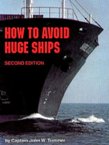bomccarthy
Posts: 414
Joined: 9/6/2013
From: L.A.
Status: offline

|
quote:
ORIGINAL: Jorge_Stanbury
quote:
ORIGINAL: bomccarthy
Production models of the Bf-109 and FW-190 used mechanically driven single stage, variable speed superchargers which gave best performance below 25,000 feet; the versions intended for high-altitude operation used liquid nitrous oxide injection (tank capacity lasted approx 20 minutes), although a few FW-190 prototypes were built with turbos.
the early versions, the later ones simply got a bigger super charger
from https://www.chuckhawks.com/evolution_ME-109.html
"In January 1944, the DB605AS with a larger supercharger was introduced. It was a little slower at low altitude, but above 23,400 ft, the AS-equipped models became increasingly superior, reaching 417 mph at 27,000 ft. This engine was not fitted for GM1"
that is why I think F4U could had better altitude performance if they needed to pursue it; not by adding turbo, which was too complicated for an existing design but by another solution; maybe a larger supercharger (like later BF109) or by 2-speed/ 2-stages (like P-51) or two superchargers (like P-63) or something else
The F4U (and F6F) did have two-stage supercharging, like the P-51 and P-63, but optimized for "medium altitudes", with a critical supercharger altitude of 22,000 feet (compared to 27,000 feet for the P-51B). Optimizing it for a higher critical altitude would have reduced performance at medium altitude; this showed up in comparison tests between the F4U-1 and the P-51B.
The P-47 and P-51B/D were developed to operate at the same altitude as the intended bombing altitude of the B-17 and B-24 (27,000 ft +); the Navy fighters were intended to operate at altitudes where enemy aircraft were typically encountered (below 25,000 feet). Ironically, USAAF lowered bombing altitudes in 1944, as studies showed that bombing accuracy increased significantly below 25,000 feet. By the Spring of 1945, even B-29s were dropping their bombs from 20,000 to 25,000 feet during their daylight raids over Japan, even though they were designed to operate close to 30,000 feet.
|
 Printable Version
Printable Version











 named Sakai . . .
named Sakai . . . 
 ')) Probably one of the best-looking WW2 fighers IMHO (surpassed only by the Spitfire and maybe the P-51)!
')) Probably one of the best-looking WW2 fighers IMHO (surpassed only by the Spitfire and maybe the P-51)! 


 New Messages
New Messages No New Messages
No New Messages Hot Topic w/ New Messages
Hot Topic w/ New Messages Hot Topic w/o New Messages
Hot Topic w/o New Messages Locked w/ New Messages
Locked w/ New Messages Locked w/o New Messages
Locked w/o New Messages Post New Thread
Post New Thread